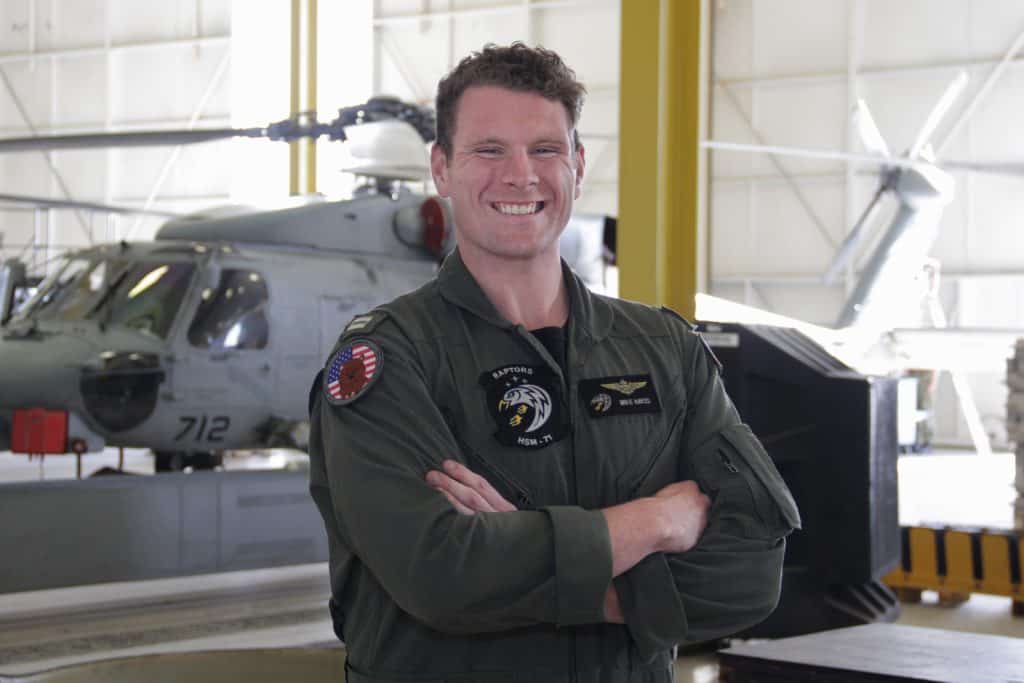

As a member of the oldest Maritime Strike Squadron, Lt. Mike Hayes is part of a Naval legacy. Hayes is a pilot responsible for flying helicopters and is a part of Helicopter Maritime Strike Squadron (HSM) 71, which supports the aircraft carrier USS John C. Stennis.
“We have to be ready for whatever threats there may be in the world,” said Hayes. “We look for submarines and surface ships. We also train for search and rescue missions.”
Hayes is a 2011 Deptford High School graduate and native of Deptford. He graduated from the U.S. Naval Academy in 2015 with a degree in chemistry.
According to Hayes, the values required to succeed in the Navy are similar to those found in Deptford.
“There’s always something that you could be doing to improve yourself and help those around you,” said Hayes.
With more than 90 percent of all trade traveling by sea, and 95 percent of the world’s international phone and internet traffic carried through fiber optic cables lying on the ocean floor, Navy officials continue to emphasize that the prosperity and security of the United States is directly linked to a strong and ready Navy.
Sailors assigned to HSM-71 are a part of history, flying with “Romeo” helicopters, the newest and most advanced in the fleet. Helicopters are equipped with the ability to conduct replenishments at sea, search and rescue missions and support operations.
The members of HSM-71 achieve excellence in military performance and create an example for other squadrons to follow through operational readiness, innovation and weapon development.
HSM-71 sailors play a critical role in supporting the Navy’s aircraft carriers. Aircraft carriers and carrier strike groups remain the centerpiece of our nation’s security strategy, supporting and protecting America’s national interests around the world. Carrier strike groups operate across the entire spectrum of military operations, according to Navy officials.
According to Admiral Mike Gilday, the chief of Naval Operations, the focus of today’s Navy is squarely on warfighting, warfighters and the capabilities needed for the Navy of the future.
“I am confident we will maximize the Navy we have today while delivering the Navy that our nation will rely upon tomorrow,” said Gilday. “And we will do so with urgency. Our fleet will be a potent, formidable force that competes around the world every day, deterring those who would challenge us while reassuring our allies and partners.”
There are many opportunities for sailors to earn recognition in their command, community and careers. Hayes is most proud of earning his designation as a U.S. Navy pilot.
“Earning my wings of gold is more than just a job,” said Hayes. “This is a profession of learning. Once I earned my wings, I knew I was embarking upon a career of learning, and I really like that part of this profession.”
For Hayes, serving in the Navy is a tradition passed down from generations and one Hayes hopes to continue.
“My grandfather was a Marine, and I have a cousin who was a Marine,” said Hayes. “Growing up, I heard stories about military service, and now when I go home, we can share those stories together.”
As a member of the U.S. Navy, Hayes, as well as other sailors, know they are a part of a service tradition providing unforgettable experiences through leadership development, world affairs and humanitarian assistance. Their efforts will have a lasting effect around the globe and for generations of sailors who will follow.
“Every experience I have is something I’ll be able to share with my kids and grandkids,” said Hayes. “A tradition of military service is more than just about me. It’s about my family.”










